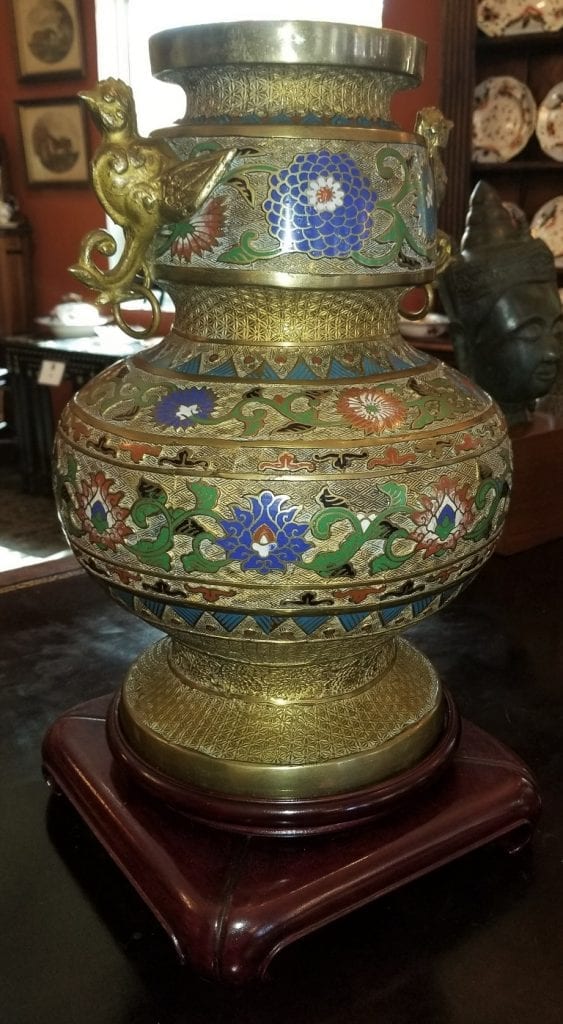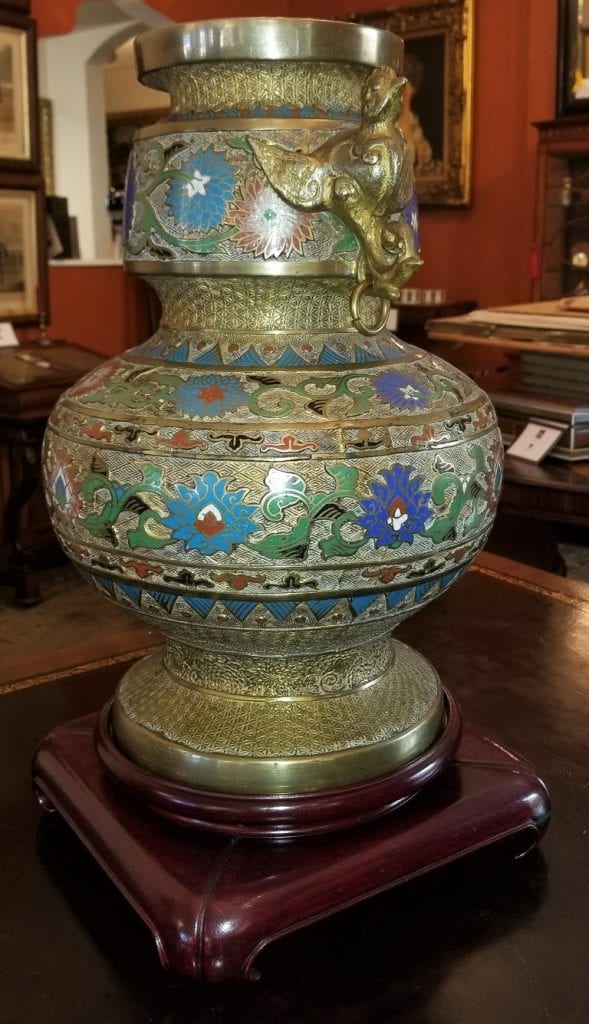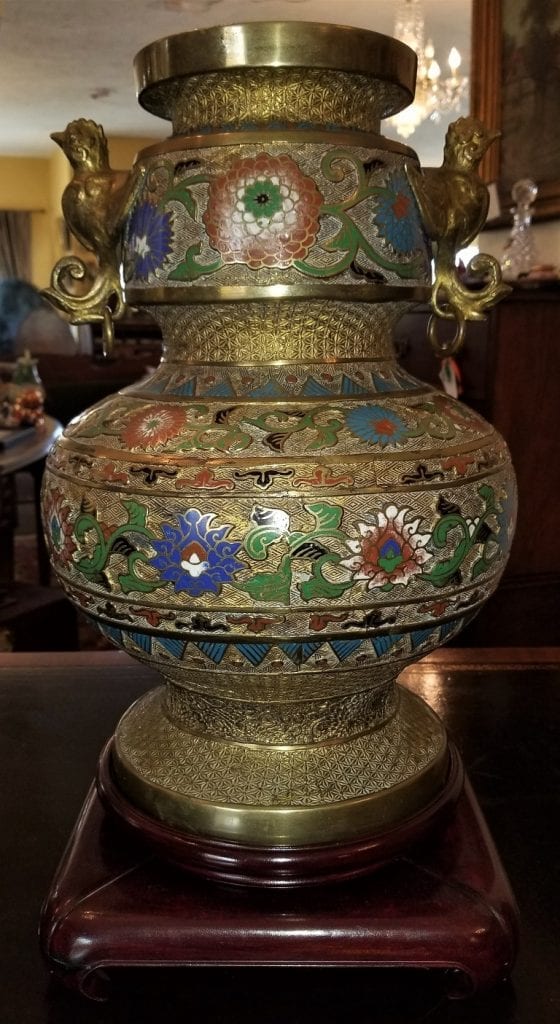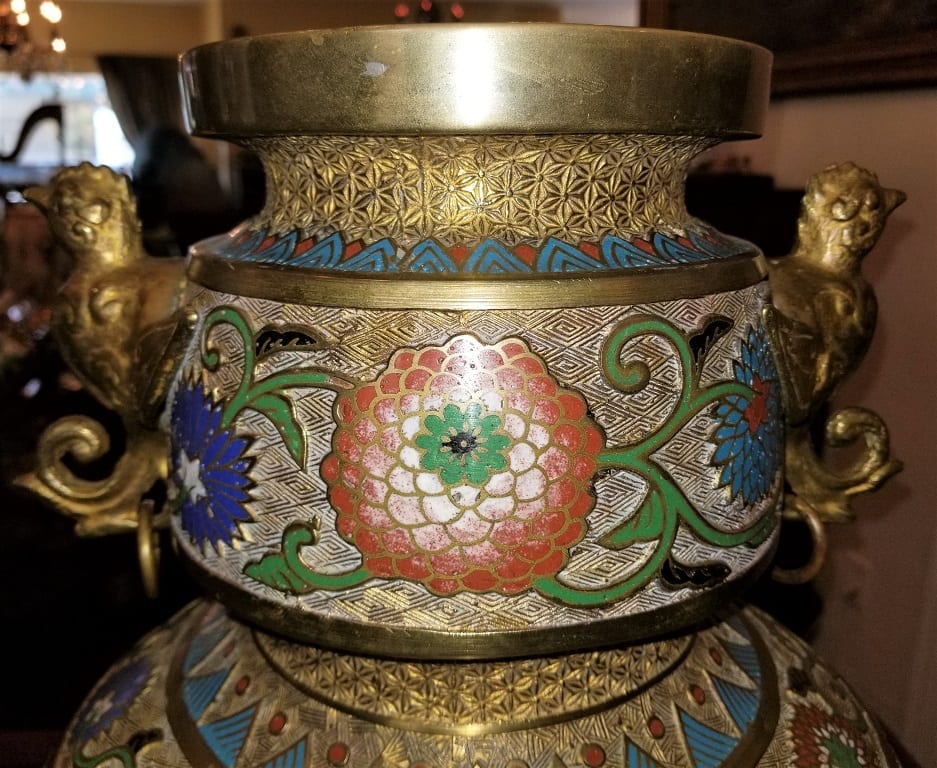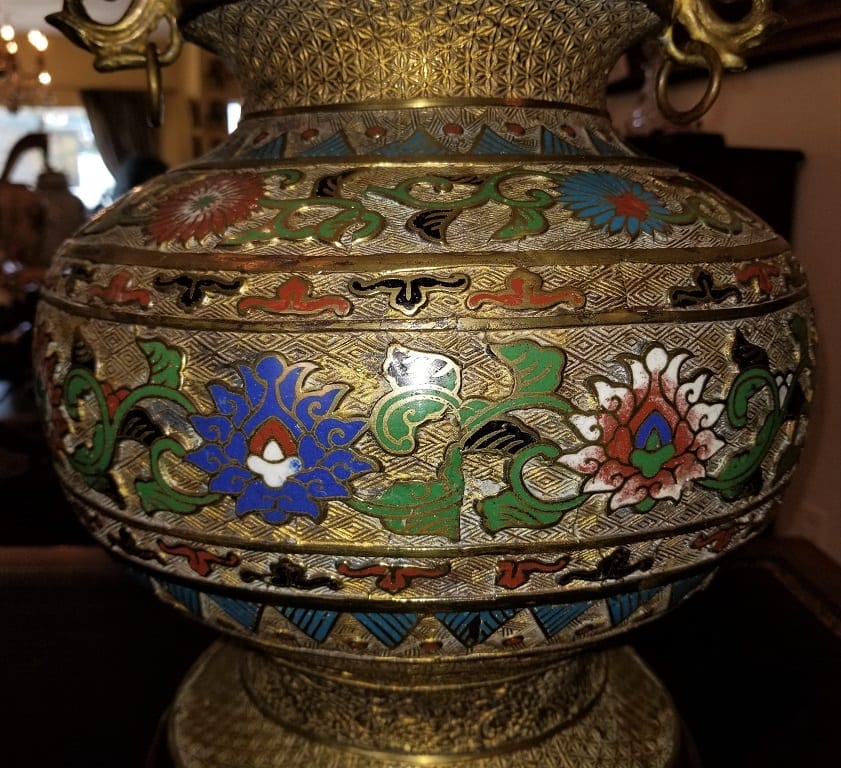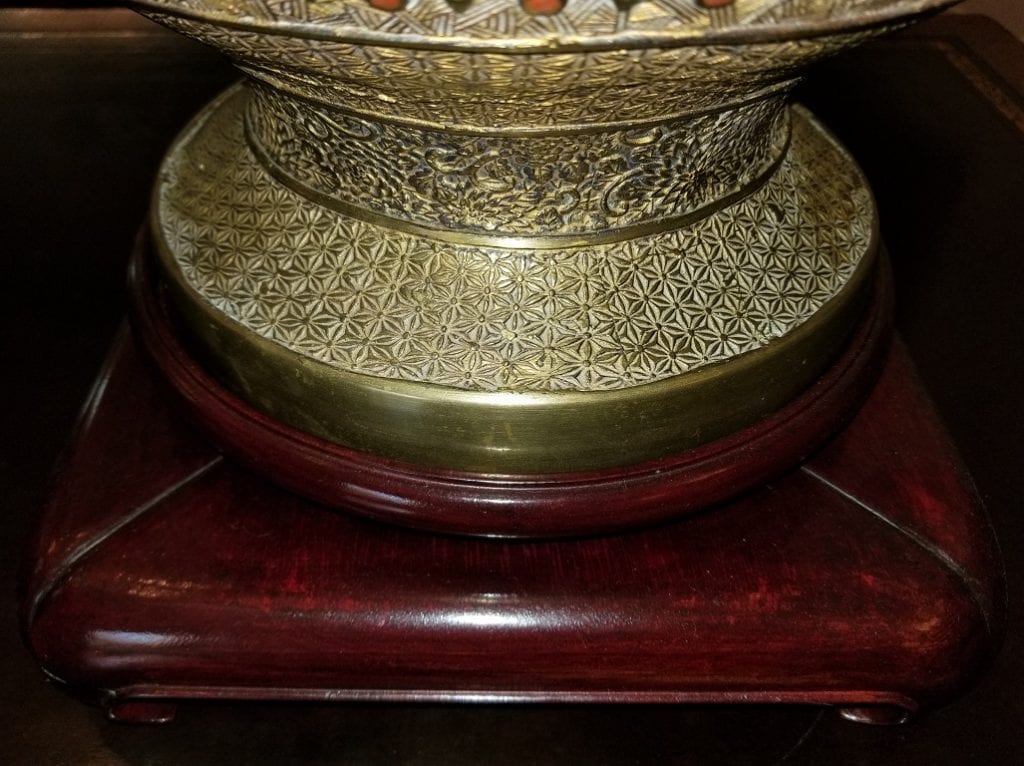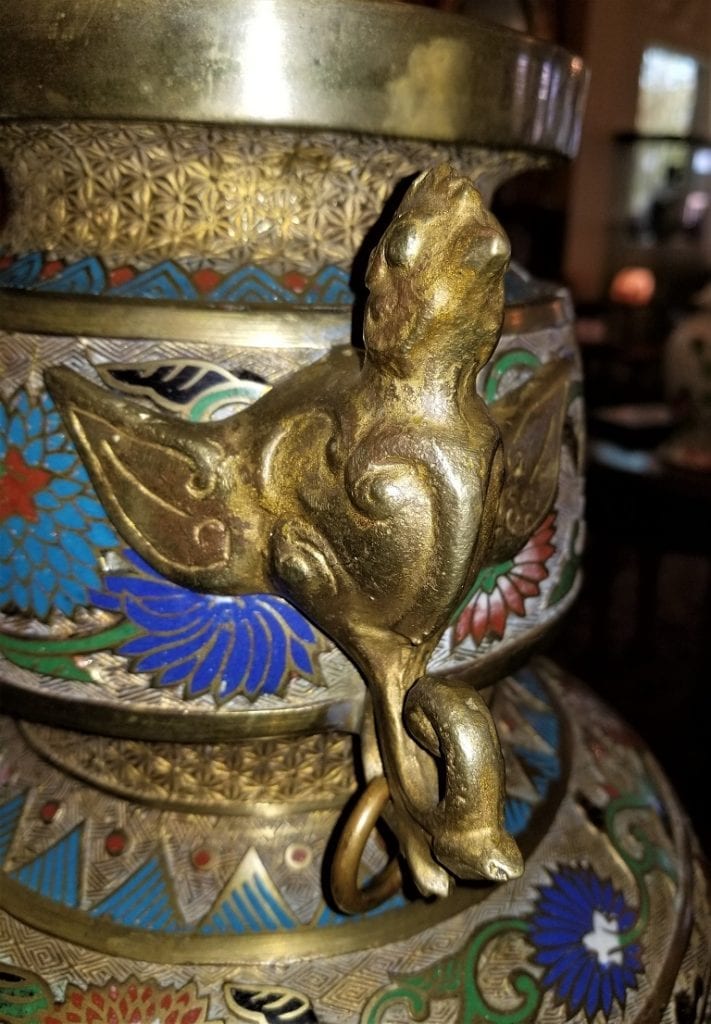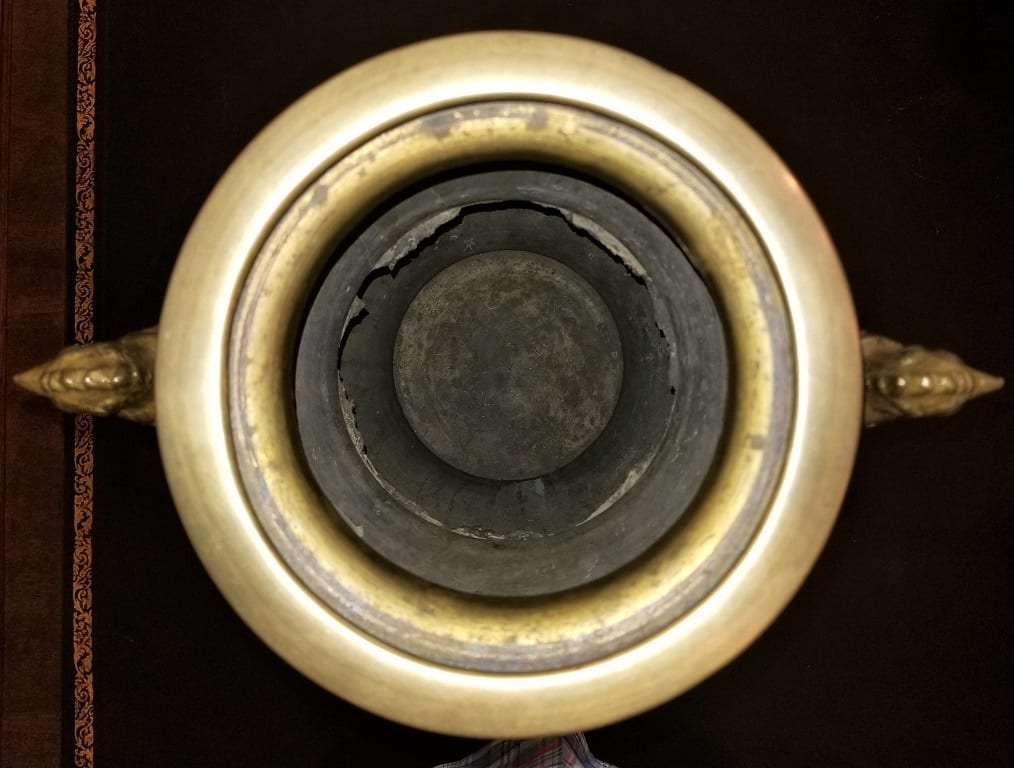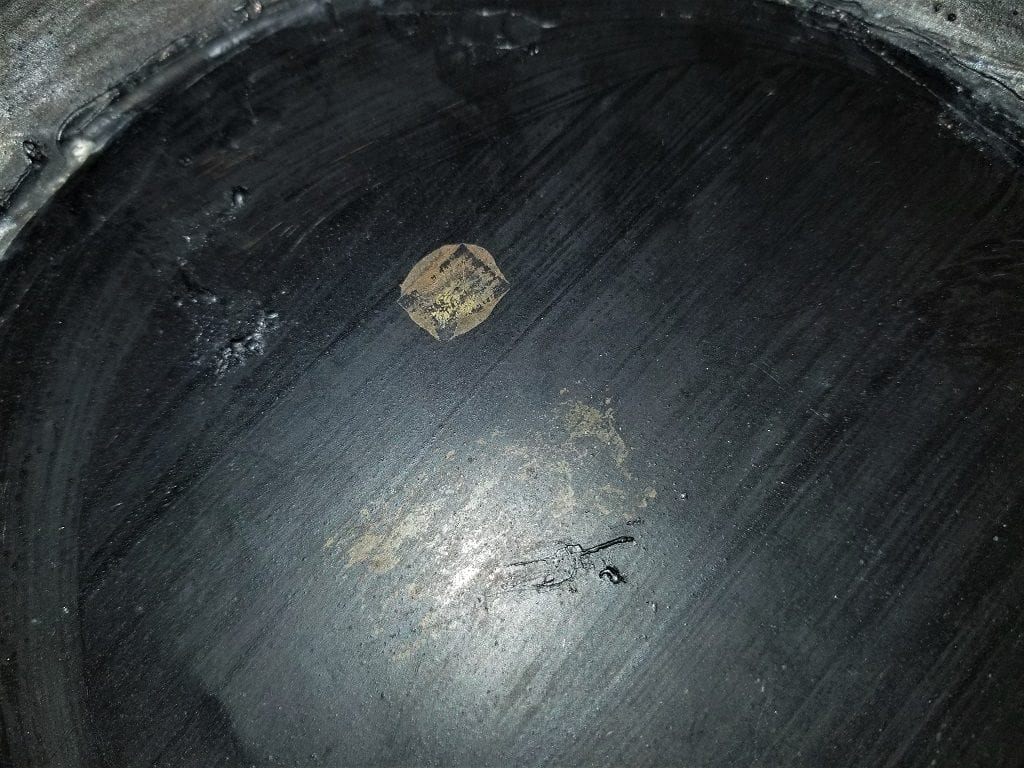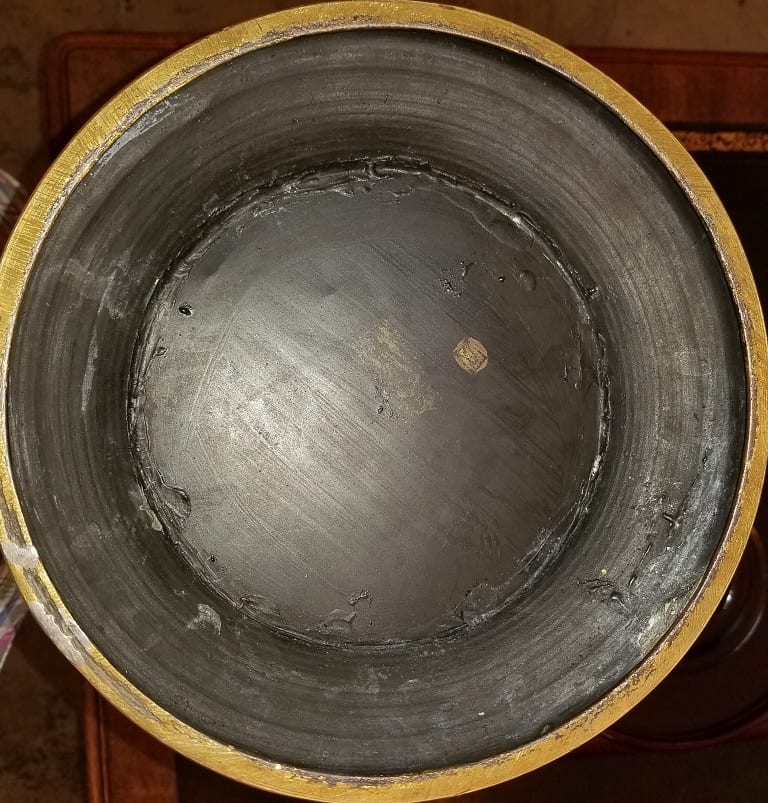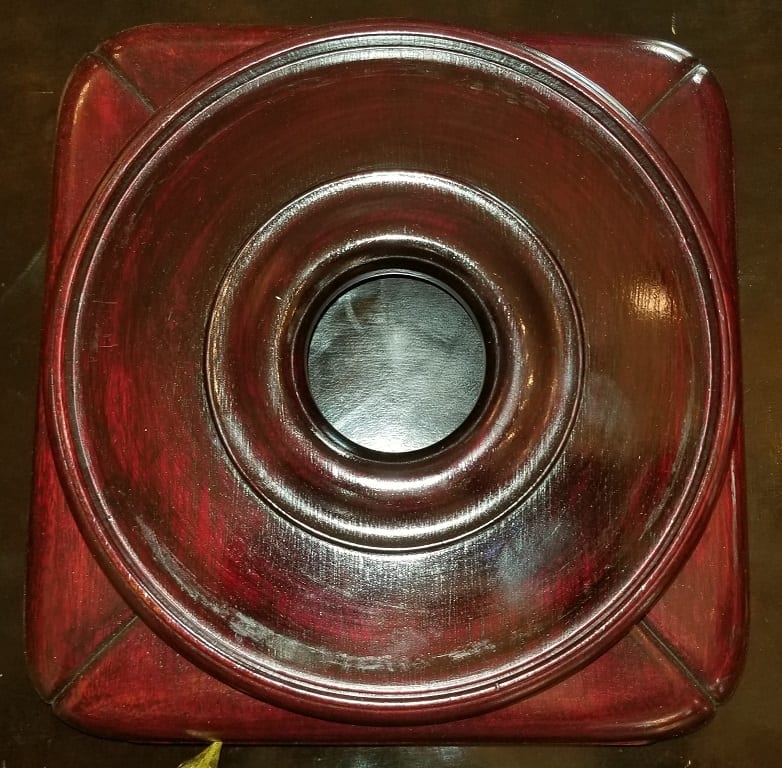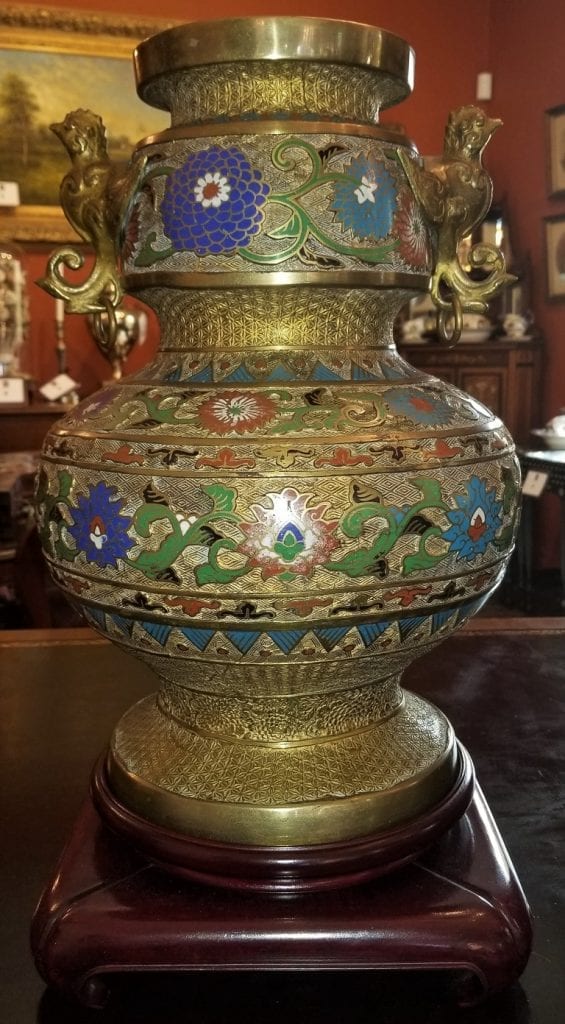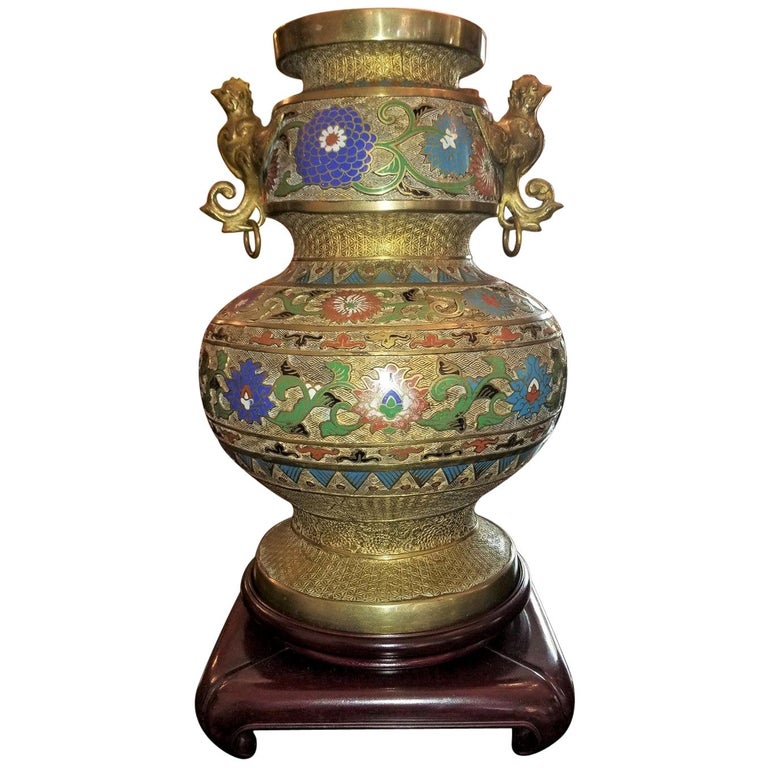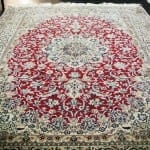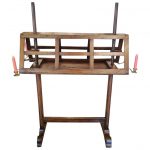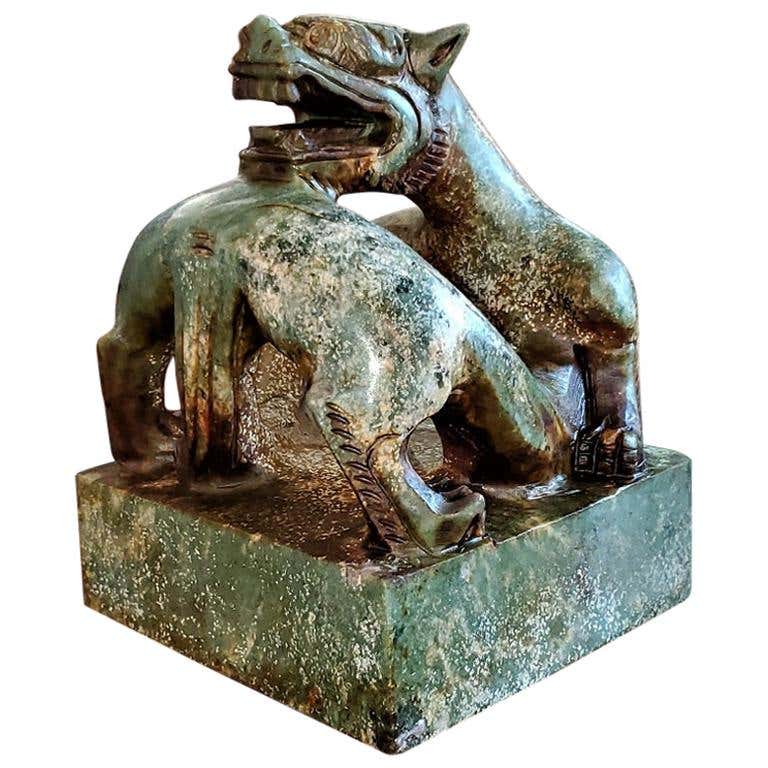Large Oriental Champleve Urn on Stand
PRESENTING a BEAUTIFUL and VERY HIGH QUALITY Large Oriental Champleve Urn on Stand.
Early 20th Century, circa 1910 – 20.
Probably Japanese.
Marked, but we cannot decipher the mark.
STUNNING champleve work with enameled flowers of various species. Gorgeous turquoise, blue, green, red, white and orange enamels. STUNNING chasing on the solid brass/bronze urn.
Lovely original wooden stand.
2 birds of paradise on either side of the urn with ringed handles.
Provenance: From the private collection of a former New York Art Dealer who moved to Dallas in the 1980’s.
Champlevé is an enamelling technique in the decorative arts, or an object made by that process, in which troughs or cells are carved, etched, die struck, or cast into the surface of a metal object, and filled with vitreous enamel. The piece is then fired until the enamel fuses, and when cooled the surface of the object is polished. The uncarved portions of the original surface remain visible as a frame for the enamel designs; typically they are gilded in medieval work. The name comes from the French for “raised field”, “field” meaning background, though the technique in practice lowers the area to be enamelled rather than raising the rest of the surface.
The technique has been used since ancient times, though it is no longer among the most commonly used enamelling techniques. Champlevé is suited to the covering of relatively large areas, and to figurative images, although it was first prominently used in Celtic art for geometric designs. In Romanesque art its potential was fully used, decorating caskets, plaques and vessels, in Limoges enamel and that from other centres.
Champlevé is distinguished from the technique of cloisonné enamel in which the troughs are created by soldering flat metal strips to the surface of the object. The difference between the techniques is analogous to the woodworking techniques of intarsia and marquetry. It differs from the basse-taille technique, which succeeded it in the highest quality Gothic work, in that the bottoms of the recesses for the enamel are rough, and so only opaque enamel colours are used. In basse-taille the recesses are modelled, and translucent enamels are used, for more subtle effects, as in the 14th century Parisian Royal Gold Cup
Link: https://en.wikipedia.org/wiki/Champlev%C3%A9
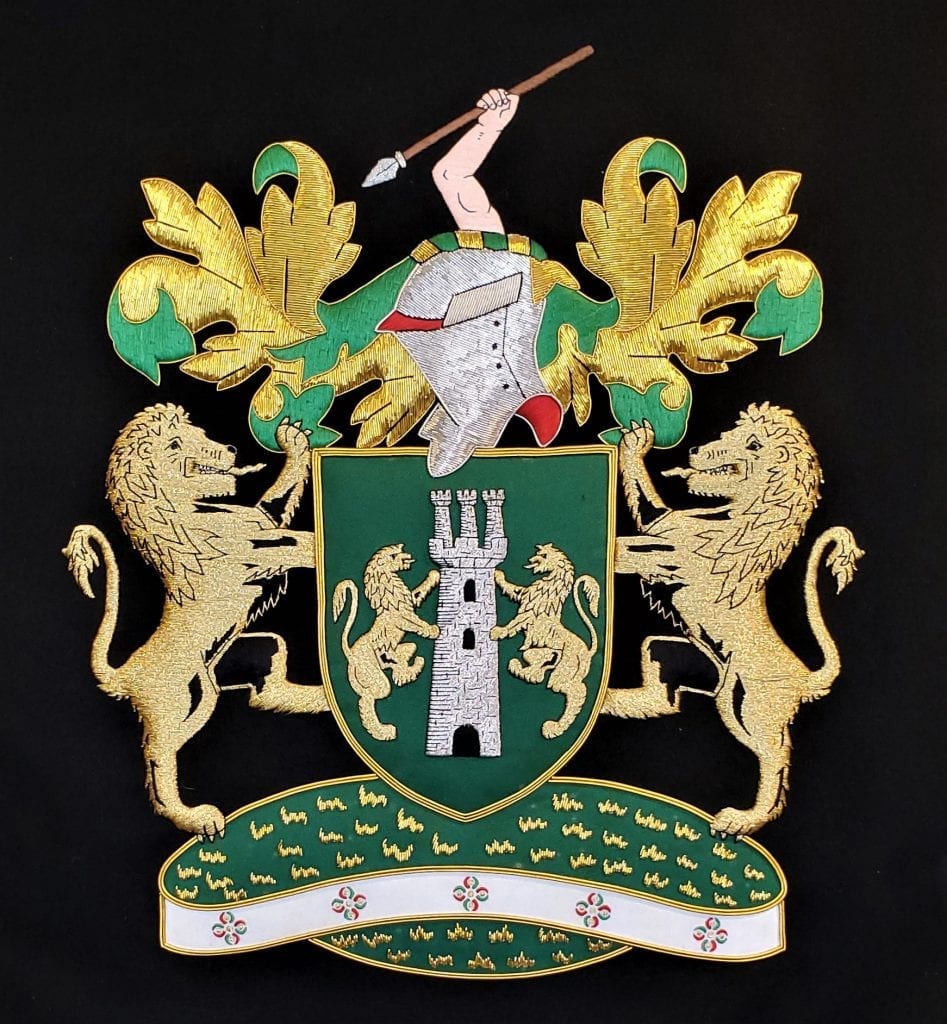

Large Oriental Champleve Urn on Stand
Provenance: From the private collection of a former New York Art Dealer who moved to Dallas in the 1980’s.
Condition: Good original condition.
Dimensions: 21.5 inches Tall. Diameter of 12 inches at widest. The stand is 12 inches x 12 inches.
SALE PRICE NOW: $2,200
